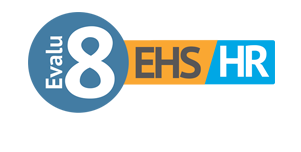In today’s complex industrial environment, companies are increasingly turning to EHS (Environment, Health, and Safety) software to help manage their operations. This powerful software can help manufacturing facilities to streamline their processes, increase efficiency, and minimize risk. In this article, we’ll explore the basics of EHS software for industrial manufacturing, highlight its key features, and take a closer look at the benefits of its implementation.
Understanding EHS Software in Industrial Manufacturing
What is EHS Software?
EHS software refers to a suite of tools designed to help organizations manage environmental, health, and safety risks. These risks could include anything from chemical and hazardous waste management to emergency preparedness and response planning.
One of the key benefits of EHS software is that it helps organizations to streamline their safety and compliance processes. By using a centralized system to manage all aspects of EHS, companies can reduce the risk of errors and ensure that they are meeting all relevant regulations and requirements.
The Importance of EHS in Industrial Manufacturing
EHS is critical for any manufacturing facility, as it helps ensure compliance with local, state, and federal regulations. It also helps companies to identify and mitigate risks, thereby minimizing the potential for accidents, injuries, and harmful impacts on the environment.
Industrial manufacturing facilities can be particularly high-risk environments, with a range of potential hazards and risks. By implementing an EHS software solution, companies can take a proactive approach to safety and compliance, reducing the risk of incidents and protecting both employees and the environment.
Key Features of EHS Software
Modern EHS software solutions offer a range of features and capabilities to help users manage their safety and compliance obligations. Some of the most critical features include:
- Incident tracking and reporting: This feature enables users to track and report on workplace accidents, injuries, and illnesses. By capturing detailed information about incidents, companies can identify patterns and trends, allowing them to take proactive steps to prevent future incidents.
- Risk assessment and hazard identification: EHS software can help companies to identify and assess potential risks and hazards in the workplace. By conducting regular risk assessments, companies can identify areas of concern and take steps to address them before incidents occur.
- Environmental management: EHS software can help companies to manage environmental regulations and track their compliance. This includes managing permits, tracking emissions and waste, and ensuring that the company is meeting all relevant environmental standards.
- Training and certification management: The software can help users manage employee training and certification requirements. By tracking employee training and certification, companies can ensure that their employees are properly trained and qualified to perform their jobs safely.
- Document management: Users can store and track critical documents and records related to safety and compliance obligations. This includes everything from safety data sheets to inspection reports, ensuring that important information is easily accessible when needed.
- Mobile access: Many EHS software solutions offer mobile access, allowing users to access critical information and complete tasks from anywhere, at any time. This can be particularly useful for employees who work remotely or in the field.
Overall, EHS software is an essential tool for any industrial manufacturing facility. By implementing a comprehensive EHS software solution, companies can ensure that they are meeting all relevant regulations, reducing the risk of incidents, and protecting their employees and the environment.
Benefits of Implementing EHS Software
Implementing EHS software can bring significant benefits to companies in terms of workplace safety, compliance, and risk management. In addition, it can help improve operational efficiency and free up staff time and resources.
Improved Safety and Compliance
One of the primary benefits of implementing EHS software is improved workplace safety and regulatory compliance. By streamlining EHS management processes, companies can ensure that they are meeting all of their obligations and reducing the risk of accidents, injuries, and environmental damage. This can help protect employees, customers, and the environment, and can also help companies avoid costly fines and legal action.
For example, EHS software can help companies to track and manage safety incidents, near-misses, and hazards, enabling them to identify trends and take corrective actions to prevent future incidents. It can also help companies to stay up-to-date with changing regulations and requirements, ensuring that they are always in compliance.
Streamlined Data Management
EHS software can also help companies to centralize and manage critical data related to workplace safety and compliance obligations. This can include data on hazardous materials, safety training, inspections, and audits. By having all of this data in one place, companies can respond more quickly and effectively to emerging risks and ensure that they are always up-to-date with their obligations.
For example, EHS software can provide real-time alerts and notifications when compliance deadlines are approaching, ensuring that companies never miss an important deadline. It can also generate reports and dashboards that provide insights into key safety metrics and trends, enabling companies to make data-driven decisions.
Enhanced Risk Management
EHS software can help companies to identify potential risks and hazards in the workplace, enabling them to take proactive steps to mitigate these risks. This can help reduce the potential for accidents, injuries, and environmental damage.
For example, EHS software can help companies to conduct risk assessments and develop risk mitigation plans. It can also provide tools for incident investigation and root cause analysis, enabling companies to identify the underlying causes of incidents and take corrective actions to prevent future incidents.
Increased Operational Efficiency
Finally, EHS software can help companies to improve operational efficiency by streamlining processes and eliminating manual administrative tasks. This frees up staff time and resources, enabling companies to focus on other critical areas of their operations.
For example, EHS software can automate tasks such as data entry, report generation, and compliance tracking. It can also provide mobile access to critical EHS data, enabling employees to access information and complete tasks from anywhere, at any time.
In conclusion, implementing EHS software can bring significant benefits to companies in terms of workplace safety, compliance, risk management, and operational efficiency. By streamlining processes and centralizing data, companies can improve their EHS performance and protect their employees, customers, and the environment.
Choosing the Right EHS Software for Your Manufacturing Facility
Identifying Your EHS Needs
Before selecting an EHS software solution, it’s essential to identify your company’s unique safety and compliance needs. This will help you choose a solution that meets those requirements and provides the most value to your organization.
One way to identify your EHS needs is to conduct a thorough risk assessment of your manufacturing facility. This assessment should include a review of your current safety procedures, compliance requirements, and potential risks and hazards. By conducting a risk assessment, you can gain a better understanding of your organization’s EHS needs and identify areas where an EHS software solution can help.
Another way to identify your EHS needs is to involve your employees in the process. Your employees are on the front lines of safety and compliance, and they can provide valuable insights into the challenges and opportunities for improvement within your organization. Consider conducting employee surveys or focus groups to gather feedback and input on your EHS needs.
Evaluating Software Features and Capabilities
Once you’ve identified your organization’s EHS needs, it’s essential to evaluate the features and capabilities of the available EHS software solutions to choose the best fit. Look for solutions that offer the features you require, such as incident tracking and reporting, risk assessment, and environmental management.
When evaluating EHS software solutions, it’s also important to consider the software’s user interface and ease of use. A user-friendly interface can help ensure that your team adopts and effectively uses the software.
Additionally, consider the scalability of the software. As your organization grows and evolves, your EHS needs may change. Choosing a software solution that can scale with your organization can help ensure that your investment provides long-term value.
Integration with Existing Systems
EHS software should be able to integrate seamlessly with your existing business systems. Ensure that the software you choose is compatible with your existing software and can work with your current workflows. This will help ensure a smooth transition to the new system.
Integration with other systems can also provide additional benefits. For example, integrating your EHS software with your HR system can help ensure that employee training and certification records are up to date and easily accessible.
Vendor Support and Training
Choosing a vendor that provides excellent support and training is critical to the success of any EHS software implementation. Look for vendors that offer training and support services to ensure that your team has the guidance they need to implement and use the software effectively.
When evaluating vendors, consider their track record of customer support and their commitment to ongoing product development and improvement. A vendor that is invested in the success of your organization can provide valuable insights and guidance throughout the implementation process.
Additionally, consider the availability of training resources. Look for vendors that offer a variety of training options, such as online training, on-site training, and user manuals. This can help ensure that your team has the knowledge and skills they need to effectively use the software.
Best Practices for Implementing EHS Software
Establishing Clear Goals and Objectives
Before implementing EHS software, it’s important to establish clear goals and objectives for the project. This will help your team stay focused and aligned throughout the implementation process.
Engaging Stakeholders and Employees
Engage employees in the implementation process to ensure buy-in and understanding of the software’s value. This will help ensure that the software is used as intended and can help prevent resistance to change.
Developing a Systematic Implementation Plan
Creating a systematic implementation plan will help ensure that the software implementation is smooth and effective. A well-planned implementation process can help prevent delays, minimize confusion, and increase the chances of success.
Monitoring Progress and Adjusting as Needed
Monitoring progress and adjusting the implementation plan as needed is critical to success. Regular check-ins and project milestones can help ensure that the project stays on track and that any necessary adjustments are made to achieve the desired outcomes.
EHS software is essential for industrial manufacturing facilities to manage their safety and compliance obligations effectively. By selecting the appropriate software, companies can achieve compliance, streamline processes, and minimize the risk of incidents and accidents. Whether you’re just starting to explore EHS software solutions or looking to upgrade to a new system, it’s important to consider each of the factors discussed in this article to ensure a successful implementation.



